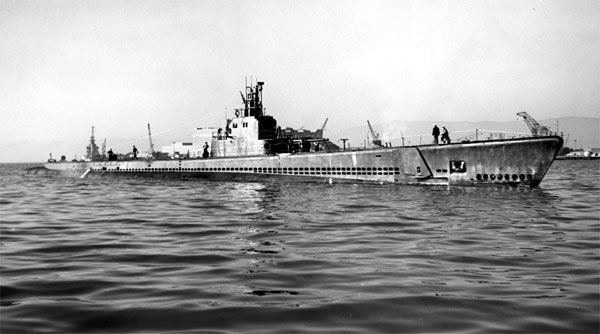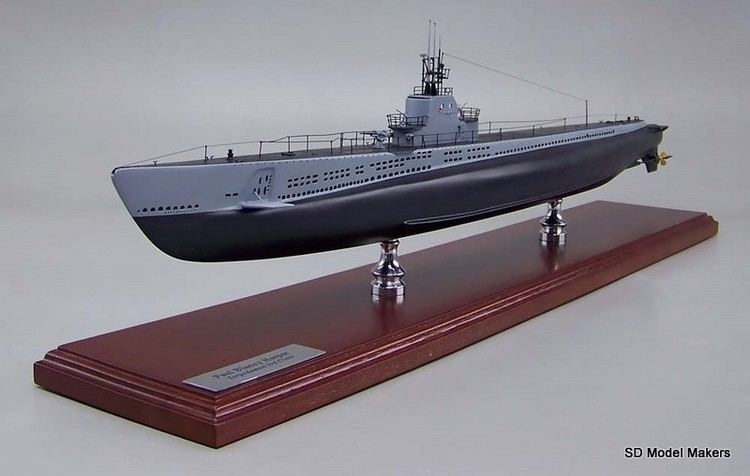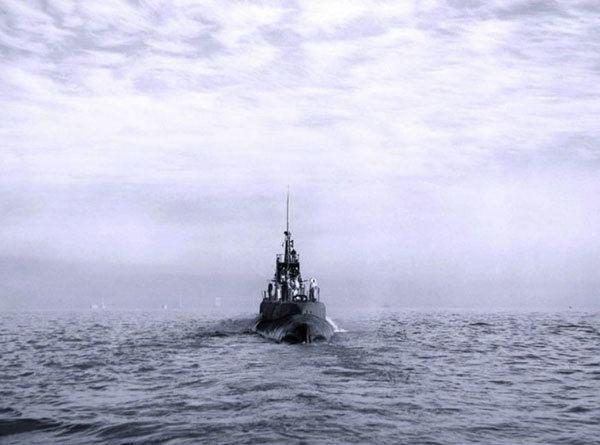Laid down 14 July 1941 Commissioned 4 May 1942 Launched 5 January 1942 | Sponsored by Mrs. Ray Spear Construction started 14 July 1941 Length 95 m | |
 | ||
Displacement 1,525 long tons (1,549 t) surfaced2,424 long tons (2,463 t) submerged | ||
USS Herring (SS-233), a Gato-class submarine, was the only ship of the United States Navy to be named for the herring, a type of small oily fish found in the temperate, shallow waters of the North Atlantic.
Her keel was laid down 14 July 1941 by the Portsmouth Naval Shipyard in Kittery, Maine. She was launched on 15 January 1942 (sponsored by Mrs. Ray Spear, wife of Rear Admiral Ray Spear, Chief of the Bureau of Supplies and Accounts), and commissioned on 4 May 1942 with Lieutenant Commander Raymond W. Johnson (Class of 1930) in command.

After shakedown, the new submarine was one of five sent to the Mediterranean Sea to take station off the North African coast prior to Operation Torch, the invasion of North Africa. Reaching her position off Casablanca on 5 November 1942, Herring remained there, spotting but not attacking several targets. On the morning of 8 November as the invasion was launched, the patient sub had her chance, sinking the 5,700 ton cargo ship Ville du Havre. Herring returned to Rosneath, Scotland, on 25 November and departed for her second war patrol 16 December, but targets were scarce. The fourth war patrol, an antisubmarine sweep in Icelandic waters, and fifth patrol, which took her back to the United States on 26 July 1943, netted Herring no more kills.

Herring departed New London, Connecticut, for the rich hunting grounds of the Pacific on 9 August 1943. After intensive training at Pearl Harbor, she sailed 15 November 1943 on her sixth war patrol to join the ranks of the American submarines systematically decimating Japanese shipping and destroying the Japanese economy. She scored two kills, the 3,948 ton Hakozaki Maru on 14 December, and the 6,072 ton Nagoya Maru to celebrate New Year's Day 1944. Herring’s next patrol was a frustrating one as on 24 March 1944 she stalked a large aircraft carrier but was detected and driven deep before she could attack.

Lieutenant Commander Johnson commanded Herring for five of her first six patrols, with the sole exception being March 1943 when John Corbus was in command. On her seventh and eight patrols she was captained by Lieutenant Commander David Zabriskie, Jr.

Herring’s eighth war patrol was to be both her most successful and her last. Topping off at Midway Island on 21 May 1944, Herring headed for the Kurile Islands patrol area. Ten days later she rendezvoused with Barb (SS-220). Herring was never heard from or seen again. However, Japanese records prove that she sank two ships, Ishigaki and Hokuyo Maru, on the night of 30 – 31 May. Ishigaki had been responsible for the sinking of USS S-44 (SS-155) on 7 October 1943. Herring's exact manner of loss can also be determined from these records. Two more merchant ships, Hiburi Maru and Iwaki Maru, were sunk while at anchor in Matsuwa Island on the morning of 1 June 1944. In a counter-attack, enemy shore batteries scored two direct hits on the submarine's conning tower and "bubbles covered an area about 5 meters wide, and heavy oil covered an area of approximately 15 miles." On her last patrol, Herring had sunk four Japanese ships for a total of 13,202 tons. In all she had sunk six marus totaling 19,959 tons, and a Vichy cargo ship.

Herring received five battle stars for her service in World War II.
Legacy

There is a memorial plaque at the Naval Weapons Station in Seal Beach, California, and another one, along with the ship's bell, at Battleship Memorial Park in Mobile, Alabama.
In June 2005, near the site of the sinking was established a memorial sign to the crew of the lost boats, which fought against the Japanese during the Second World War. The event was held in the fourth Kamchatka-Kuril historical and geographical expedition, led by the Russian researcher Evgeny Vereshaga.
In 2016 the wreck of Herring was located near Matua Island by a joint expedition of the Russian Geographical Society and Russian Defense Ministry. Aleksandr Kirillin, secretary of the academic board of Russia’s Military Historical Society, said that "Russian divers in cooperation with the Pacific Fleet sailors discovered the submarine at a depth of 104 meters."
